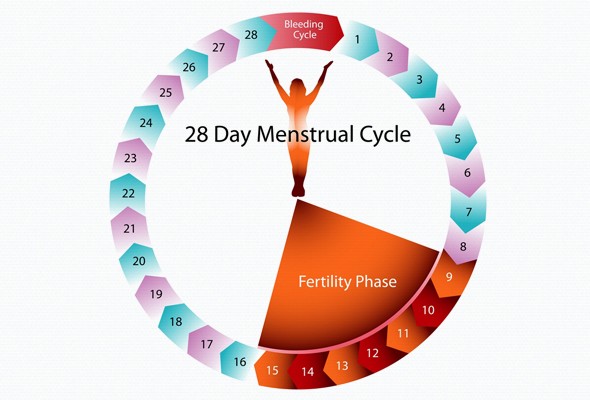
18th October 2016 | by MFC Team
My menstrual cycle is more like 40 days long rather than 28. How do I determine when I’m ovulating? Is it still day 14 even if my cycle is longer?
NOTE: We’re reposting this Ask an Expert post from October 2012 due to popularity and interest from our site visitors.
Written by our medical expert Stephen Hudson, M.D.
The quick answer is NO. If a cycle is longer than 35 days, it may be anovulatory (meaning that ovulation did not occur). However if ovulation did occur during a 40 day cycle it will likely happen around day 26. I will explain below.
The average menstrual cycle is 28 days, with an acceptable range of 21 – 35 days. A cycle of 40 days is less likely to be ovulatory than a 21 – 35 day cycle. However – if your cycles are consistently around 40 days it is possible that you could be having menstrual cycles that are ovulatory.
An “ovulatory” menstrual cycle is divided into 2 parts. The first part is the time leading up to ovulation and is called the “follicular” phase of the cycle. During this time the follicles (which are the small cysts containing the eggs) are growing, and producing estrogen. As the eggs are maturing, the estrogen produced makes the lining of the uterus (the endometrium) develop. This is the first phase of its preparation to receive an embryo. This phase can vary in length.
After ovulation when an egg has been released, the “follicular cyst” (now called a corpus luteum) releases a hormone called progesterone, which matures the estrogen-primed lining of the uterus (endometrium) in the second stage of its preparation for an embryo to implant. This is called the secretory phase. This phase of the menstrual cycle is usually consistently 14 days long.
Some pointers to help identify if, and when, you are ovulating include:
1. Basal body temperature. After you ovulate, the ovary produces progesterone which is thermogenic, and this raises your temperature. A basal body temperature (BBT) plotted on a graph will easily identify if your cycle is ovulatory. BBT thermometers can be purchased at most drug stores.
If your cycle is ovulatory, whatever the length of the cycle, ovulation will normally occur 14 days before your period. So if the cycle is ovulatory, and your cycle is 40 days then you can expect ovulation to occur around cycle day 26 (40 – 14 = 26). If your cycle was 35 days, ovulation would be expected about cycle day 21 (35 – 14 = 21). Your temperature should rise after ovulation.
2. Symptoms. Women who have ovulatory cycles, whatever the length, will often experience some ovulatory symptoms which may include some abdominal pain or clear vaginal discharge at the time of ovulation, followed by premenstrual symptoms such as breast tenderness, mood changes and cramping. All of these symptoms (PMS) are suggestive of an ovulatory cycle.
3. Ovulation predictor kits. Before you ovulate, the pituitary gland in the brain releases a hormone called LH (luteinizing hormone). This LH “surge” can be detected in your urine by using an ovulation predictor kit (OPK). These kits can also be purchased at most drug stores.
4. Blood testing. After ovulation your ovary produces a hormone called progesterone. A simple blood test in the second phase of your menstrual cycle (after ovulation) will determine whether or not your progesterone is elevated – indicating that you have ovulated. Your GP can order this test for you.
I think the best way to start would be to keep a BBT and consult your doctor. There are also many downloads and apps which will help you monitor your cycle, such as the “Monthly Cycles” or “Fertility Friend Mobile” apps from iTunes.
Leave a Reply